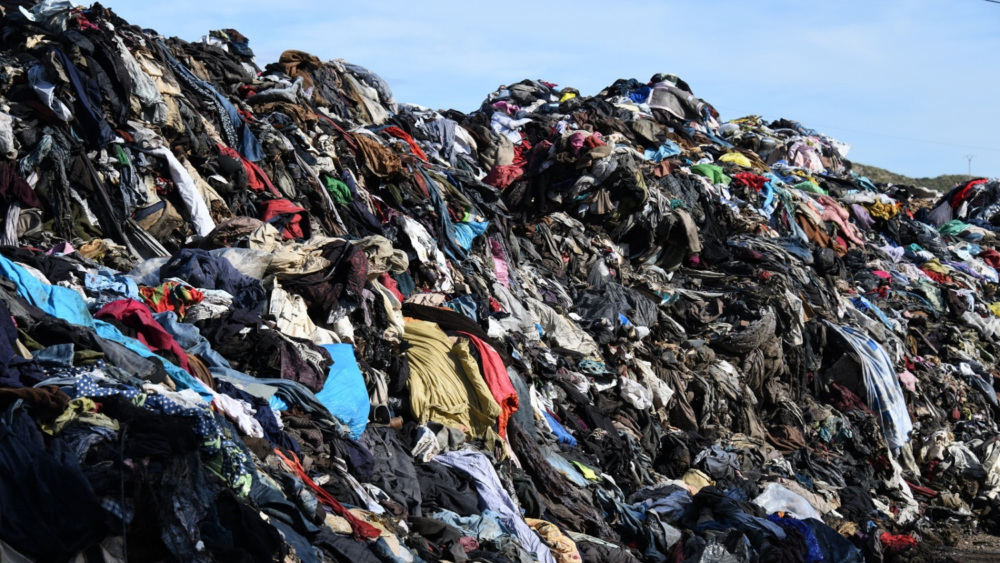The fashion and clothing industry generates massive amounts of waste — and emits a lot of pollution in the process.
Producing just one cotton t-shirt requires more than 700 gallons of water and releases the same greenhouse gas emissions as driving a car for about 10 miles. Clothing and other textile waste is the fastest growing waste stream in the country. Around the world, the equivalent of one dump truck filled with clothing is sent to a landfill or incinerator every second, and more than $100 billion worth of materials are wasted each year.
In the United States, we generate enough textile waste to fill the Mall of America– the largest shopping mall in the country– every six days.
What makes this waste all the more outrageous is that millions of these clothing items are never even worn. A staggering 30% of all clothes made around the world are never sold.
Waste is a design flaw.
The way that clothing manufacturers are currently operating reinforces the linear economy of manufacturing, use and disposal at the greatest possible speed, and as we’ve seen, creates a lot of pollution in the process.
There are a lot of critically important changes that need to take place– both through policy and within the industry itself– to move away from this very wasteful model to a more circular one in which consumer products and the materials that make up our world are built to last and easy to repair, and once they fulfill their original purpose, they are repurposed through reuse, recycling, or composting in a sustainable loop.

Take Action!

Tell Forever 21: Waste is Out of Fashion
Sign our petition calling on Forever 21 CEO Winnie Park to commit the company to not trashing or burning new, unsold clothing.

Tell H&M: Waste is Out of Fashion
Sign our petition calling on H&M Group CEO Daniel Ervér to commit the company to not trashing or burning new, unsold clothing in the United States.
